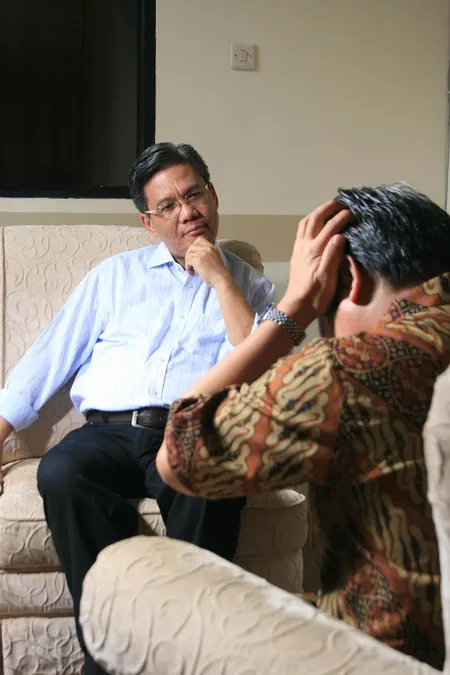
Patients and Families Take Charge: New Study Sets the Agenda for Down Syndrome Care
2025-03-24
Author: Sarah
A groundbreaking collaborative study involving The University of Western Australia, Perth Children's Hospital, the Kids Research Institute Australia, and Down Syndrome WA has put the voices of patients and their families at the forefront of clinical care and research for children with Down syndrome. Published in the esteemed Archives of Childhood Disease, this study arrived just in time for World Down Syndrome Day, emphasizing a pivotal shift in how care priorities are shaped.
This comprehensive research captured the insights of 215 individuals living with Down syndrome and their caregivers alongside feedback from 191 clinicians, achieved through online surveys and an interactive consensus meeting. The combined effort distilled an impressive 565 initial ideas into a prioritized list of the top 10 concerns regarding clinical care and research.
Professor Britta Regli-von Ungern-Sternberg, one of the lead authors and a noted authority in Pediatric Anesthesia, remarked that the highest priority identified was the establishment of a gold standard model of care that encompasses thorough screening health checks at all levels of care. This approach aims not only to improve immediate health outcomes but also to provide a consistent healthcare framework for children affected by Down syndrome.
Following closely, the second priority focuses on enhancing sleep quality. Specific issues such as obstructive sleep apnea, snoring, and circadian rhythm disturbances were highlighted by families, showcasing the need for targeted research and intervention in these areas.
Other critical concerns raised in the study include finding solutions for acute healthcare challenges like sepsis infections, improving respiratory health, managing chronic lung diseases, and ensuring the safety of anesthesia—especially pertinent to children with this genetic condition.
Interestingly, the study revealed contrasting priorities between family members and clinicians. While families stressed the need for increased training for healthcare professionals on Down syndrome specifics, clinicians tended to zero in on more technical aspects of care, such as airway management. This disparity underscores the importance of bridging the gap between family needs and clinical focus.
Dr. Ellen Taylor, Medical Co-Director of the Medicine Division at PCH, emphasized the transformative nature of this research. With roughly 13,500 Australians diagnosed with Down syndrome—36% of whom are under 20 years old—the study advocates for a more unified approach to Down syndrome care that prioritizes the child as a whole, rather than merely their diagnosis.
As the medical community recognizes that partnering with families can enhance clinical care and advocacy, new models of integrated care are gaining traction. Associate Professor Helen Wilcox, Dean of the Medical School at UWA, pointed out the critical necessity of maintaining continuity of care from childhood through adulthood. By incorporating both primary care practitioners and specialists, these models promise comprehensive support for individuals with Down syndrome throughout their lives.
This study marks a significant step forward in ensuring that the voices of patients and families shape the future of Down syndrome care, opening the door for a brighter, more inclusive healthcare environment for all affected by this genetic condition.




 Brasil (PT)
Brasil (PT)
 Canada (EN)
Canada (EN)
 Chile (ES)
Chile (ES)
 Česko (CS)
Česko (CS)
 대한민국 (KO)
대한민국 (KO)
 España (ES)
España (ES)
 France (FR)
France (FR)
 Hong Kong (EN)
Hong Kong (EN)
 Italia (IT)
Italia (IT)
 日本 (JA)
日本 (JA)
 Magyarország (HU)
Magyarország (HU)
 Norge (NO)
Norge (NO)
 Polska (PL)
Polska (PL)
 Schweiz (DE)
Schweiz (DE)
 Singapore (EN)
Singapore (EN)
 Sverige (SV)
Sverige (SV)
 Suomi (FI)
Suomi (FI)
 Türkiye (TR)
Türkiye (TR)
 الإمارات العربية المتحدة (AR)
الإمارات العربية المتحدة (AR)